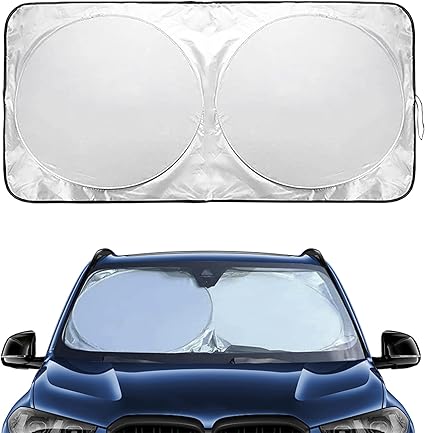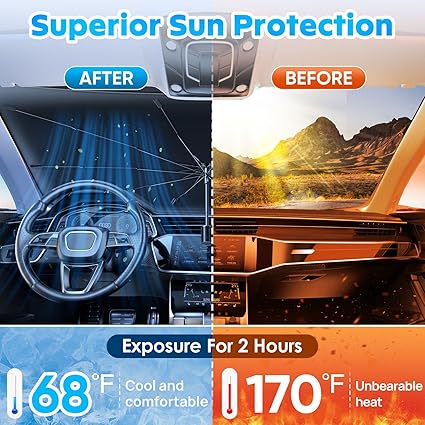How to Create a Table of Contents in Microsoft Word: Ultimate Guide
Published on January 1, 2025 | By The Engineer Post
Master the art of creating a professional table of contents in Microsoft Word with this step-by-step tutorial! Whether you're formatting a report, thesis, or eBook, this guide teaches you how to set up heading styles, configure multilevel lists, and insert an automatic table of contents to impress your readers. Boost your document’s navigation and crush your competitors with our expert tips and recommended products!
Note: Amazon product links are included for convenience (affiliate links). Get the tools you need to excel in Microsoft Word!
Table of Contents
- Why Use a Table of Contents?
- Components Needed
- Step 1: Setting Up Heading Styles and Multilevel Lists
- Step 2: Applying Headings to Your Document
- Step 3: Inserting the Table of Contents
- Step 4: Customizing Your Table of Contents
- Recommended Products
- Troubleshooting Tips
- Advanced TOC Ideas
- Frequently Asked Questions
Why Use a Table of Contents?
Why create a table of contents in Word? A table of contents (TOC) enhances document navigation, improves readability, and gives your work a professional edge. It’s essential for long documents like reports, books, or academic papers, allowing readers to jump to sections instantly.
Benefits: Saves time, boosts user experience, and signals high-quality formatting.
Components Needed
To create a table of contents in Microsoft Word, you need:
- ✅Microsoft Word (2016, 2019, 2021, or Microsoft 365)
- ✅Computer (Windows or Mac)
- ✅Document with sections to organize
Optional: A Microsoft 365 subscription for cloud features or a style guide for consistent formatting.
Step 1: Setting Up Heading Styles and Multilevel Lists
How do I set up headings for a table of contents in Word? Proper heading styles and multilevel lists are the foundation of an automatic TOC. Follow these steps to configure them.
1.1 Define Multilevel Lists
Start by setting up numbered heading levels for a structured hierarchy.
1Access Multilevel List: Go to Home > Paragraph group > Multilevel List button.

2Choose Numbering Style: Select a numbering format (e.g., “1, 2, 3” for main titles, “1.1, 1.2” for subheadings).

1.2 Link Headings to Levels
Assign heading styles (Heading 1, Heading 2, etc.) to each level.
3Main Title (Heading 1): In the Multilevel List menu, choose Define New Multilevel List. Set Level 1 to “1, 2, 3” and link to Heading 1.

4Big Title (Heading 2): Set Level 2 to “1.1, 1.2” and link to Heading 2.

5Small Title (Heading 3): Set Level 3 to “1.1.1, 1.1.2” with a dot separator, including the previous level number. Link to Heading 3.


6Set Display Levels: In the TOC settings, select to show up to Level 4 (Heading 3 + 1).

💡Tip: Customize separators (e.g., dots, dashes) to match your document’s style.
Step 2: Applying Headings to Your Document
How do I apply heading styles in Word? Assign the configured headings to your document’s titles.
1Main Title: Highlight your main title (e.g., “Introduction”) and select Heading 1 from the Styles pane.

2Big Titles: Select all subheadings (e.g., “Chapter 1”) and apply Heading 2.

3Small Titles: Select smaller subheadings (e.g., “1.1 Overview”) and apply Heading 3.

💡Tip: Use the Navigation Pane (View > Navigation Pane) to verify your heading structure.

Step 3: Inserting the Table of Contents
How do I insert a table of contents in Word? With headings applied, insert an automatic TOC.
1Place Cursor: Position your cursor where you want the TOC (usually at the document’s start).
2Insert TOC: Go to References > Table of Contents and choose an automatic style (e.g., “Automatic Table 1”).


Result: Word generates a TOC based on your headings, with clickable links to each section.

Step 4: Customizing Your Table of Contents
How do I customize a table of contents in Word? Tailor your TOC for a professional look.
1Modify Styles: Right-click the TOC, select Modify, and adjust fonts, colors, or indentation.
2Update TOC: After editing headings, click Update Table to refresh the TOC.
3Show Fewer Levels: In Table of Contents > Custom Table of Contents, set “Show levels” to 2 or 3.
💡Tip: Use consistent fonts and spacing to match your document’s theme.
Manual vs. Automatic Table of Contents
Should I use a manual or automatic TOC in Word? Here’s a comparison to help you decide.
| Feature | Manual TOC | Automatic TOC |
|---|---|---|
| Ease of Use | Time-consuming | Quick and automatic |
| Updates | Manual edits required | Auto-updates with headings |
| Links | No clickable links | Clickable navigation links |
| Best For | Short, static documents | Long, dynamic documents |
Recommendation: Use an automatic TOC for efficiency and professional results in most cases.
Troubleshooting Tips
- ⚠️TOC Not Updating: Ensure all headings use Heading 1, 2, or 3 styles, then click Update Table.
- ⚠️Incorrect Numbering: Check the Multilevel List settings and re-link levels to headings.
- ⚠️TOC Missing Entries: Verify that headings are not set to “Normal” style.
- ⚠️Misaligned TOC: Adjust indentation in Table of Contents > Custom Table of Contents.
Advanced TOC Ideas
- 🚀Add hyperlinks to external resources in your TOC.
- 🚀Create a split TOC for multi-part documents (e.g., separate TOCs for chapters).
- 🚀Use custom styles for a branded TOC look.
- 🚀Export your document to PDF with clickable TOC links.
Frequently Asked Questions
How do I create a table of contents in Microsoft Word?
Set up heading styles (Heading 1, 2, 3), configure multilevel lists, apply headings to your titles, and go to References > Table of Contents to insert an automatic TOC.
Why is my table of contents not updating in Word?
Ensure all headings use Heading 1, 2, or 3 styles, then right-click the TOC and select Update Table.
Can I customize the table of contents in Word?
Yes, right-click the TOC, select Modify to adjust fonts and styles, or use Custom Table of Contents to change levels and formatting.
Conclusion
This Microsoft Word table of contents tutorial equips you to create a professional, automatic TOC with ease. By setting up heading styles, configuring multilevel lists, and inserting a clickable TOC, you’ll elevate your documents and outshine competitors. Explore our recommended products, try our advanced tips, and check out our Word tutorials for more formatting tricks. Share your TOC success in the comments and join the productivity community! 📝






0 Commentaires